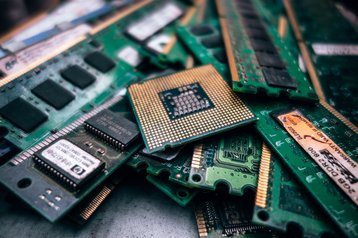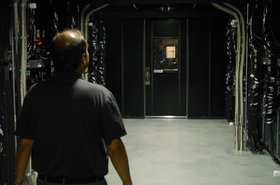Reliability, scalability, and reduced costs are buzzwords that every data center professional has become well-accustomed to in an age where the cloud is one of the most prominent trends. Endlessly touted as the data center’s new frontier, a cloud environment has much to offer businesses that are looking to relocate their IT assets, applications, or data.
Although, as enterprises are hurrying to join the mass exodus and reap the benefits of cloud computing, many may fail to realize that they are inadvertently leaving a mounting threat in their wake.
Think about your waste
In 2018, it was predicted that around 49.8 million metric tons of electronic waste would be generated worldwide, and that number is on the rise. Now, the improper management and disposal of this electronic waste, or e-waste, comprised of computers, servers, phones, and other IT assets that have reached the end of their useful lives, has become an urgent global concern.
When retired electronics or IT assets are inappropriately dumped into landfills, the harmful materials they contain, including cadmium, lead, chromium, and more, can leach into the soil, taint groundwater, and release toxic fumes. These occurrences have hugely damaging effects on surrounding ecosystems and often facilitate harmful exposure for individuals in nearby areas, resulting in an array of health complications.
Not only do these escalating e-waste issues present critical setbacks for global health and environmental safety, they also compromise businesses security. If enterprises are practicing improper IT asset disposal (ITAD), they risk incurring substantial fines from regulating bodies or data breaches that can undermine client trust. As so many industry players make plans to abandon their traditional physical equipment in favor of cloud environments, these e-waste pitfalls will become increasingly grave.
All hope is not lost, though. There are ITAD strategies that can ensure that every cloud migration process occurs as safely and ethically as possible, and it begins by allying with an industry professional that specializes in compliant asset retirement. Where many businesses find it difficult to navigate strict and constantly-evolving regulatory compliance requirements or to understand value windows, a qualified and certified ITAD partner offers deep insight to guide best practices, garnering maximum efficacy throughout every step.
When locating an IT asset disposition partner to help implement eco-friendly strategies, e-Stewards, R2, and ISO 14001 certifications are great indicators that clearly convey an entity’s commitment to protecting the environment against damaging practices. These certifications ensure that the company is meeting EPA standards for responsible practices, protecting against downstream hazards, and aligning with other tightening legal and auditory requirements.
Once the disposal process has begun, an ITAD partner should create an inventory of all the equipment in question so that they can assess value windows and resale eligibility to recoup maximum value for the client. Each type of asset has a different disposition window, level of demand, Manufacturer Suggested Retail Price (MSRP), and more, so a professional will help untangle the many considerations. Overall, the sooner a piece of equipment is resold, the better.
Any assets that cannot be resold should be recycled properly, not illegally moved overseas or dumped into landfills, and have raw materials safely extracted. A reputable ITAD professional should also act as a guide for chain-of-custody documentation and perform diligent data destruction and erasure processes.
The key to all of this is understanding that ITAD is not a set and forget process. Regulations and requirements are constantly evolving as new environmental concerns arise and the amount of e-waste grows. As such, businesses should regularly check in on their strategy to ensure they are up-to-date on best practices. In the end, having a knowledgeable partner will ensure security, maximize ROI, minimize business risk, and certify that environmental ethics are consistently upheld throughout the cloud migration.
Many businesses have already recognized a need for specialized help when developing conscientious and responsible practices, and as a result the market for ITAD is expected to be worth over $20 billion by 2022.
However, there is still plenty of work to be done to stem the rising tide of damaging e-waste. Now more than ever, it is of critical importance that every business is conscious of the effect their business strategy may have on the global community. As the industry moves towards the cloud, asset management remains a vital component for maintaining both business and global health.





